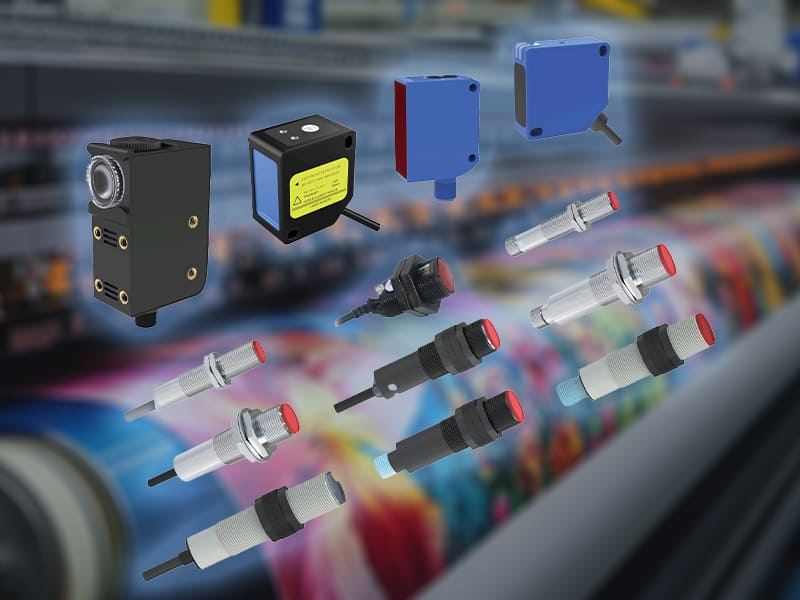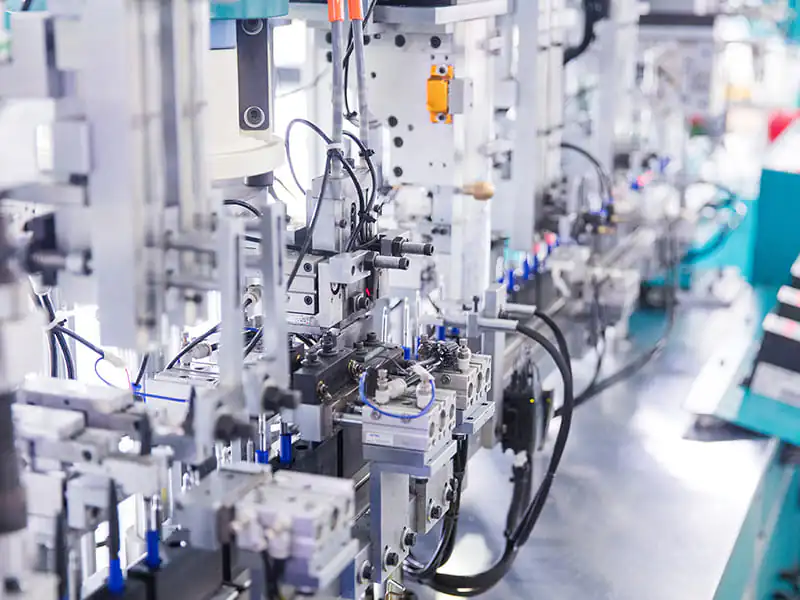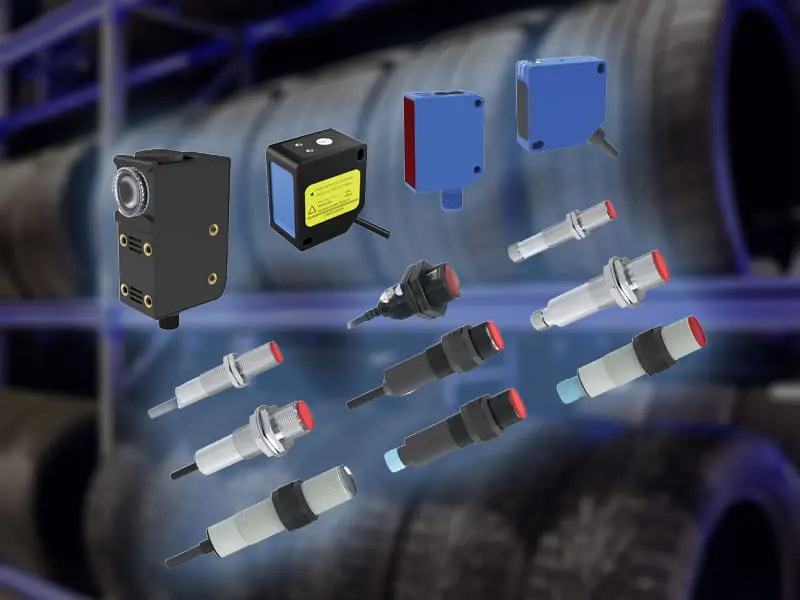Application of BEDOOK Sensor in Wet Wipe Packaging Machine

Today, let’s dive into a topic that’s top of mind for all of us in the wet wipe manufacturing industry: BEDOOK Sensor in Wet Wipe Packaging Machine. As global demand for hygienic, convenient wet wipes grows, the automation and stability of wet wipe packaging machines have become make-or-break for business competitiveness. We all know leading international brands like Germany’s Krones and Italy’s IMA dominate the market with their high-performance packaging machines—but here’s the catch: these machines rely heavily on sensors to run smoothly.
Traditional sensors, from brands like Germany’s Pepperl+Fuchs, Japan’s Omron, and Keyence, often fall short: they’re inaccurate in positioning, slow to respond, and weak at resisting interference. This leads to real headaches—packaging misalignment, poor sealing, counting errors, and unplanned downtime. That’s where the BEDOOK Sensor in the Wet Wipe Packaging Machine steps in. We’ve tailored solutions to fix these exact pain points, perfectly fitting international brand machines. Let’s break down the biggest industry issues and how BEDOOK solves them.
Wet Wipe Material Positioning Deviation
(1) The Problem We All Face
After wet wipes are folded and stacked, they need to be precisely fed into packaging stations—like bagging for pouch-style packs. Most clients we work with use Krones or IMA machines, which traditionally rely on Omron’s E3Z series photoelectric sensors for material positioning. But wet wipes are made of non-woven fabric, which is often reflective and comes in different colors (white for baby wipes, blue for disinfecting ones).
I’ve seen firsthand how traditional sensors struggle here: reflections throw off detection, and color changes cause misjudgments. The result? Wipes shift during feeding—sometimes they’re misaligned in the bag (edges sticking out), other times they’re missed entirely (the machine seals empty bags). This drops the yield by 5-8%, and you end up hiring extra staff to sort defective products. It’s a double hit to efficiency and costs.
(2) BEDOOK’s Solution
To fix this, we turn to BEDOOK’s FQ31-H025 series background suppression photoelectric sensor—and it’s a game-changer. It uses diffuse reflection, so it doesn’t care about the wipe’s color or shine. Whether it’s a glossy white baby wipe or a dark blue disinfecting one, the sensor picks it up reliably. Its light spot is just 2mm, so it can target the edge of stacked wipes with millimetric precision.
We’ve tested this with Krones and IMA machines: the sensor responds in ≤1ms, matching the machines’ feeding rhythm perfectly. Clients have seen misalignment rates drop to under 0.5%, and they’ve cut back on sorting staff. This is exactly why BEDOOK Sensor in Wet Wipe Packaging Machine works—we solve the real, on-the-ground issues.
Packaging Film Tension Loss and Deviation
(1) The Cost of Slow Responses
Wet wipe packaging film is usually PE or composite film. For high-speed machines like Krones (up to 300 bags per minute) or mid-speed IMA models, stable film tension is non-negotiable—any deviation ruins production. Traditional tension sensors, like Germany’s HBM series, are slow: they take ≥50ms to react.
Here’s what happens in real life: if the film has tiny thickness variations (common with composite films), tension fluctuates. By the time the HBM sensor catches it, the film is already off-track. This causes wrinkles (bad for appearance) or even tears (which forces a shutdown to change rolls). I’ve calculated the cost for a client: at 300 bags per minute and a $0.01 profit per bag, a 10-minute shutdown costs $300. That adds up fast.
(2) BEDOOK’s Solution
Our answer? The BEDOOK UM18-T10V2-C31S12-X ultrasonic diffuse reflection sensor. This sensor tracks the film’s edge in real time, responding in ≤20ms—fast enough to catch even ±0.5mm deviations. And since wet wipe production areas are humid (think water vapor from the wipes), we built it to resist moisture interference.
We’ve integrated this with Krones and IMA machines: it sends film position data straight to the correction motor, which adjusts tension on the fly. Clients now see deviation rates under 0.3%, and unplanned shutdowns for film changes have plummeted. This is how BEDOOK Sensor in Wet Wipe Packaging Machine turns downtime into uptime.
Wet Wipe Package Seal Integrity Detection
(1) The Hidden Risk of Micro-Leaks
Seal integrity is non-negotiable for wet wipes—it keeps moisture in and microbes out, directly affecting shelf life. Krones and IMA machines use traditional pressure sensors like America’s Omega series to check seal pressure, but here’s the flaw: these sensors only tell you if pressure is “good” or “bad”—they can’t spot micro-leaks (tiny gaps as small as 0.1mm).
We’ve had clients deal with the aftermath: micro-leaked packs go bad in storage or transit, leading to customer complaints and even recalls. And with regulations like the EU’s CE and US FDA cracking down on hygiene product packaging, the stakes are higher than ever. A single recall can cost tens of thousands in wasted inventory and reputation damage.
(2) BEDOOK’s Solution
BEDOOK’s CN-Q2010N-P21P2 capacitive proximity sensor fixes this gap. It’s a non-contact sensor we install right after the sealing station—no touching the film, no risk of contamination. Here’s how it works: if there’s a micro-leak, the sealed edge is thinner (by ≥0.05mm) from incomplete heat-sealing. The sensor picks up this tiny thickness change and triggers an alert instantly.
We’ve tested this with Krones and IMA’s high-speed lines (300 bags per minute), and it keeps up perfectly. Clients now catch 100% of seal defects, no more micro-leak surprises. This isn’t just about quality—it’s about protecting your brand. That’s the value of BEDOOK Sensor in Wet Wipe Packaging Machine.
Wet Wipe Counting Errors
(1) When “Close Enough” Isn’t Enough
Most wet wipes come in multi-pack sizes—10, 20, even 50 wipes per bag. Before packaging, you need accurate counting, but traditional sensors like Keyence’s LV series (used in IMA and Krones machines) struggle here. Wet wipes stack tightly, and the moisture or ingredients (like glycerin) make them glossy—this causes the sensor to misread: sometimes it counts one wipe as two (over-packing, wasting material) or misses a wipe (under-packing, which violates consumer laws).
I’ve seen clients get hit with fines for under-packing, and over-packing eats into profits. Industry data shows traditional counting systems have an error rate of 2-3%—that’s thousands of defective packs a month for a mid-sized facility.
(2) BEDOOK’s Solution
Our fix is the BEDOOK FG15N series small slot-type photoelectric sensor. It’s designed with a slot structure: we fit the wipe-stacking channel right between the sensor’s emitter and receiver, so there’s no way external glare can interfere. We also optimized its optical algorithm to detect even single wipes as thin as 0.2mm—stack 10 of them (2mm total) and it still counts perfectly.
The best part? It drops right into IMA and Krones machines—no need to rework the existing channel. Clients now see counting errors under 0.1%, which keeps both regulators and bottom lines happy. This is how BEDOOK Sensor in Wet Wipe Packaging Machine turns guesswork into precision.
Packaging Cutter Position Deviation
(1) The Cost of a 0.5mm Mistake
After sealing, wet wipe packs need to be cut into individual bags, and the cutter has to hit the middle of the sealed seam. A deviation of just 0.5mm cuts through the seal, ruining the pack. High-speed Krones machines (300 cuts per minute) use Pepperl+Fuchs’ NBB series inductive sensors for cutter positioning, but these sensors are slow (≥15ms).
At 300 bags per minute, a 15ms lag adds up fast. I worked with a client where this issue caused 3,000 wasted packs in just 10 minutes—all because the cutter couldn’t keep up. That’s not just material waste; it’s downtime while staff clear the jam and reset the machine.
(2) BEDOOK’s Solution
BEDOOK’s BB-Q1805-P11P3 inductive proximity sensor is built for this exact scenario. It responds in ≤5ms—fast enough to keep up with Krones’ high-speed cutting. It also has an IP67 rating, so it handles the dust and minor moisture around the cutter station without skipping a beat.
We’ve retrofitted this sensor into dozens of Krones machines: clients now see cutter deviations under ±0.2mm, and pack damage rates drop to 0.2% or lower. No more wasted bags, no more unplanned stops. This is the speed and reliability BEDOOK Sensor in Wet Wipe Packaging Machine brings to the table.
Wet Wipe Solution Level Detection
(1) When Floats Get Stuck
Wet wipes need a steady supply of solution (disinfectant, moisturizer) during production. Machines like Italy’s IMA use traditional float sensors (e.g., America’s Gems series) to monitor solution tank levels—but here’s the problem: the solution’s moisturizing ingredients (like glycerin) stick to the float, causing it to jam.
We’ve seen this lead to two disasters: either the sensor fails to alert when the solution is low (resulting in dry, useless wipes), or it thinks the tank is full when it’s not (causing overflow that contaminates the machine). On average, this happens 2-3 times a month, and each incident takes 30+ minutes to clean up and restart—time that could be used to make thousands of packs.
(2) BEDOOK’s Solution
BEDOOK’s FQ21-LJ5N-P31P2 photoelectric sensor eliminates this issue entirely. It’s non-contact—no float, no sticky residue, no jams. It detects the solution level by reading surface reflectivity, so it works with any tank material (stainless steel, PE) and doesn’t care about the solution’s viscosity.
We install it on IMA machines’ solution tanks: when levels drop below the threshold, it triggers an immediate alert to add more solution; if levels get too high, it pauses supply to prevent overflow. Clients who switched to this sensor now have zero level-detection failures per month—no more dry wipes, no more messy cleanups. This is how BEDOOK Sensor in Wet Wipe Packaging Machine keeps production running smoothly.
Conclusion
At the end of the day, the wet wipe packaging industry’s biggest pain points boil down to one thing: traditional sensors can’t keep up with the demands of high-performance international machines like Krones and IMA. From misaligned wipes to leaky seals, these issues eat into profits, damage reputations, and waste time—until now.
BEDOOK Sensor in Wet Wipe Packaging Machine isn’t just another sensor line; it’s a set of solutions built for our industry’s real problems. We’ve tailored each sensor to fit leading international machines, fix specific pain points, and meet strict global standards (CE, FDA). Whether you’re fighting counting errors, cutter, or solution overflow, we’ve got a sensor that works—fast, accurately, and reliably.
As wet wipe packaging machines get faster and more precise (think mini single-serve packs), BEDOOK will keep innovating to stay ahead. For all of us looking to boost efficiency, cut costs, and protect our brands, BEDOOK Sensor in Wet Wipe Packaging Machine isn’t just an option—it’s a necessity.
Explore Bedook: Your Trusted Sensor Manufacturer
At Bedook, we specialize in designing, developing, and manufacturing a comprehensive range of proximity sensors and switches. Our extensive product lineup includes:
- Inductive Proximity Sensors
- Capacitive Proximity Sensors
- Photoelectric Sensors
- Ultrasonic Sensors
- Solid State Relays
- Various Accessories
With over 10,000 detailed product variations and a robust R&D team, we take pride in our ability to meet your unique requirements with tailored solutions and reliable performance.
Whether you’re seeking off-the-shelf products or customized designs, Bedook offers the expertise and production capacity to ensure your satisfaction.
Get in Touch Today!
We value your interest in our products and warmly encourage you to send us an inquiry. Let us help you find the perfect sensor solution for your application.
Thank you for considering Bedook—your trusted partner in innovation and quality manufacturing. We look forward to collaborating with you!






